When Lean Business Principles Visit the Vegetable Farm
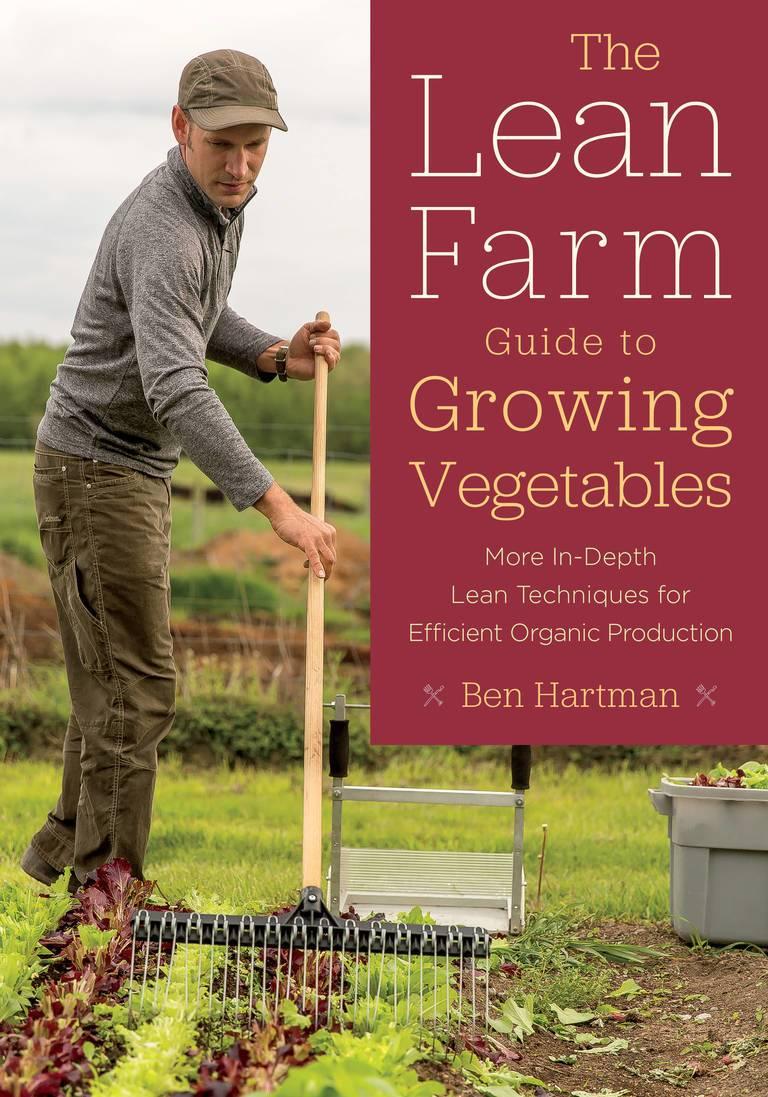

By Ben Hartman
This article is adapted from Hartman’s book The Lean Farm Guide to Growing Vegetables (Chelsea Green, 2017) and is excerpted with permission from the publisher.
In 2011 I received an email from Steve Brenneman, a CSA customer and the owner of an aluminum trailer factory. He had recently transformed his factory using the lean system, a Japanese invention designed to cut out waste and increase profits with less work. Brenneman offered to help my wife and I do the same on our farm. After initial skepticism (factory methods on farms haven’t always churned out sustainable outcomes), we took him up on his offer. Over the following several seasons, we proceeded to declutter our workspaces and cut waste from our processes. We now earn a comfortable living from our farm, and neither of us works off the property. We have stable, long-term customers, and our work doesn’t overburden us. The following are the five core lean business principles that have benefited us the most.
1. Keep only the tools that add value
Lean relies on an organization method called 5S for keeping workspaces clean. The most important step is seiri (sorting), or discarding any item from your workspace that is not used every season to create value. This has not always been easy for us to do. At first we placed too much stock in tools that, realistically, we would never use. Now we have routines for constantly making sure we are surrounded only by what we need.
Farmers love to collect tools and hoard things. But we must check that instinct because everything we keep has a cost. It costs time to trip over shovels and look for hoes. It costs to store items—property taxes on buildings and expenses to maintain those buildings. Plus there is the mental cost of living with clutter. These are costs that suck energy and money without giving anything back besides the vacuous satisfaction of ownership.
2. Let the customer define value
A second practice underlying our daily work is to always have our customers and their wishes in mind. We are growing food for them, and the products they want, both goods and services, guide our work. Specifically, we seek out answers to these three questions:
- What do our customers want?
- When do they want it?
- What amount do they want?
The more precisely we answer these questions and deliver on the answers, the more profitable we will be at year’s end. To be sure, we don’t fulfill every wish. For example, while customers might love watermelons, we don’t grow them because, for us, they are not profitable. Still, continually posing and answering the three questions ensures that paying customers, not our own whims, steer our farming.
3. Identify the steps that add value
The next principle we follow is to carefully trace value. In which steps do tomatoes and peppers and carrots become more valuable? When are we adding to their value, and when are we just spinning wheels? In a factory setting, value might be added when steel is welded to steel. That is the point when each piece is suddenly worth more. On the farm we’ve found that surprisingly few actions—seeding, harvesting, and washing food, for example—build value. These direct actions cause our food to be worth more.
4. Cut out the muda—anything that does not add value
According to the lean system, actions on your farm that don’t directly add value—like lawn mowing, cleaning, and leafing through catalogs—are considered muda.
On our farm we take muda elimination seriously. We look for the 10 mudas all the time. When we see them, as much as possible, we get rid of them. While muda is usually translated as “waste,” not all mudas are completely superfluous. We still file taxes, occasionally pull weeds, and send invoices to customers, even if these actions do not directly cause our products to be worth more. Not all mudas should be completely eliminated. The goal, rather, is to minimize the amount of time and energy given to non-value-adding activities.
We’ve come to realize that every activity we perform is either muda or value adding. There are no exceptions. Our job is to see the difference, and steer toward value. If we find ourselves performing a muda task, we ask, how can we shorten it or, better yet, eliminate it? As Shigeo Shingo, a Japanese engineer and arguably the world’s leading expert on manufacturing efficiency, observed, only the last turn of a bolt tightens it—the rest is just movement. We want to focus on bolt tightening, so to speak—on seeding, washing, harvesting, and selling—and minimize everything else. Cutting out muda has been a powerful force on our farm, increasing our profits every year, while we work less.
5. Practice kaizen—continuous improvement
The final step is to practice kaizen, or continuous improvement, rooting out more waste every year from the farm, and aligning production more tightly with customer demand. We have adopted the philosophy “When you fix it, fix it again.” Our goal is to create a farm culture where everyone on the team joins together in an effort to achieve zero-waste production.
The end goal of the five steps is compression. We want to shorten the timeline from beginning to end, from the idea to grow a crop to the moment we receive cash. Along the way our production area shrank from 5 acres to less than 1, and we shed thousands of pounds in tools and supplies. We started farming because we loved working with plants. Lean has not stripped the joy from our work. It has given us focus so that with fewer distractions—less muda—we enjoy our work now more than ever.
Ben Hartman is also the author of The Lean Farm (Chelsea Green, 2015) and has been named one of the top 50 emerging green leaders in the United States by Grist on their list of innovators with fresh, forward-thinking solutions to some of humanity's biggest challenges. Inspired by Toyota’s “lean” approach to manufacturing—a production strategy aimed at minimizing waste and maximizing efficiency—Hartman has become an expert in applying these business principles to his small produce farm in northern Indiana making it more environmentally and economically sustainable.
Farm image: David Johnson Photography
Book cover image: Chelsea Green Publishing
World Toilet Day a Reminder 1 in 3 People Lack Access to Clean Sanitation

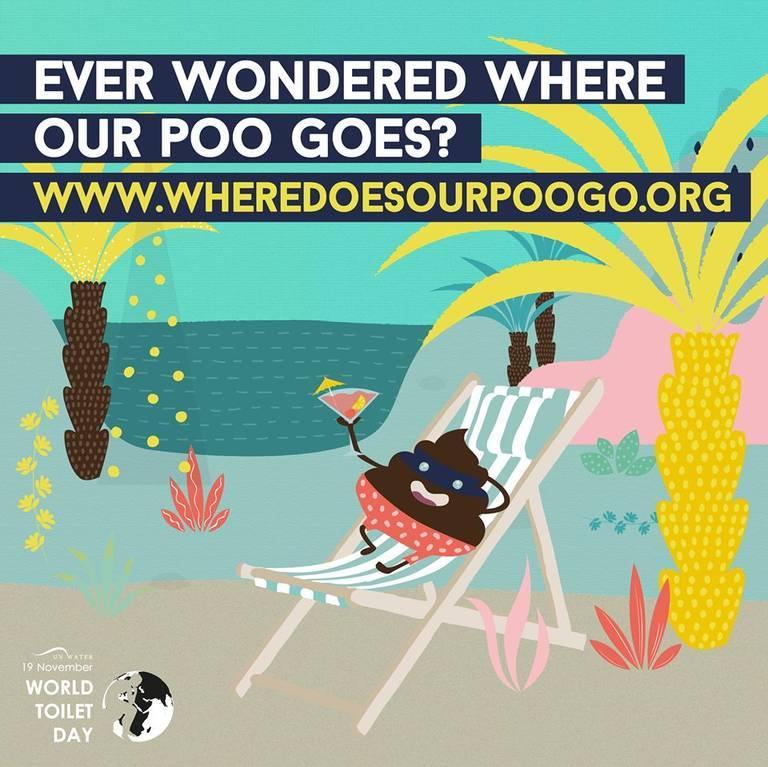
This Sunday, November 19, is World Toilet Day. First established in 2001 by the World Toilet Organization, the United Nations eventually made it one its official international days in 2013. This year, World Toilet Day's overarching theme is wastewater, with a reminder that the UN’s Sustainable Development Goals (SDGs) aim to expand clean sanitation to everyone worldwide by 2030. One objective for 2017 is to remind citizens, “Where does our poo go?” in its drive to raise awareness.
The World Health Organization (WHO) has concluded that while more people have gained access to safe water and sanitation in recent years, the statistics are still daunting. Approximately 2.3 billion people lack basic sanitation facilities such as flush toilets or latrines. Furthermore, 892 million people still defecate in the open – down from 1.1 billion in 2012, but the challenges to public health and personal safety are still a huge problem in much of the world.
Ideas for expanding clean sanitation are all over the map. The Gates Foundation, for example, has spearheaded competitions and conferences in an attempt to find solutions that will create a safe place for people to relieve themselves while also being low-impact and sustainable. Water.org’s WaterCredit program includes a program that helps women build private toilets in their communities. Transforming all that poo into energy is also an idea often proposed, as in the case of an ongoing pilot project in Madagascar.
As more companies align their strategies with the SDGs, raising awareness about the need for improved sanitation is one way in which businesses can help solve this problem - while educating their stakeholders about this ongoing challenge as well.
One such company is Kimberly-Clark, which for the past few years has supported local NGOs across the world in order to improve sanitation in developing countries. In 2014, the consumer packaged goods (CPG) giant first launched its “Toilets Save Lives” program in the United Kingdom. Since then, the initiative has expanded to over 15 countries in which Kimberly-Clark conducts business. Joining the efforts of organizations including UNICEF, WaterAid and Water for People, the program offers funding and expertise that builds and repairs toilets where they are needed. Kimberly-Clark and its partner NGOs also support hygiene and public health education programs.
The company recently claimed Toilets Change Lives helped improve the lives of at least 500,000 people worldwide. By 2022, the program seeks to make the lives of 25 million people better by boosting access to clean sanitation and empowering women and girls – the safety of whom is especially at risk when they have to find a place to relieve themselves out in the open.
Kimberly-Clark says it is also supporting next-generation technologies in order to improve sanitation. Those efforts include mentoring programs at the Toilet Board Coalition, which includes an “accelerator” that scopes out entrepreneurs who believe they have ideas that can scale and expand access to safe and clean sanitation. One example of this work is an ongoing partnership with a South African company, BioCycle, that seeks to scale up a process that uses fly larvae to turn human waste into animal feed or biodiesel.
While the loss of dignity and personal safety is partly driving efforts to improve sanitation, ongoing public health threats behoove governments, businesses and nonprofits to find new ways to manage human waste safely and effectively. The WHO has estimated that as much as 10 percent of the world’s population is eating food irrigated by wastewater; and at least 280,000 deaths each year is linked to diarrhea triggered by poor sanitation.
Image credit: UN-Water/Flickr
Upgrading Technology and Farming Methods Will Help India's Mint Farmers: Mars


We use it in tea, lip balm, shampoos and a myriad of culinary recipes. It grows like a weed in North America, but is the currency of survival for many struggling farmers in India.
Mint, a common plant that includes menthol, peppermint, lavender and sage has for years, a redeeming quality that has benefited rural farmers in Asia's second-largest country: It's simple to grow and harvest, and doesn't take a lot of technological knowledge to benefit from its crops. It can also be sold as an oil and repurposed to a variety of commodities.
That's been great for manufacturers that use herbs like peppermint and spearmint in their high-demand candies and drinks. According to Agribusiness Systems International (ASI), some 750,000 mint farmers in India produce 80 percent of the cash crop.
Mars Wrigley Confectionery (Mars), which produces well-known products like Wrigley Gum, Altoids mints and Extra has been looking at whether increased training on new growing techniques could increase profits and output for mint farmers, some of whom produce their living from one acre of land. Introducing growers to technological advances, it reasoned, might not only benefit the farmers, but reduce water consumption and improve environmental health.
So Mars contracted with ASI to train farmers on new techniques over a one-year test period to see the impact that the changes would have on crop output and family farms. They trained 2,645 growers from more than 60 villages and found they were able to increase the farmers' yield by an average 68 percent.
Their initial studies determined that India's mint industry is a non-certified industry that largely relies on subsistence farmers with an average of two acres. Improving rootstock, mulching procedures and other farming methods would raise yields and revenue for multiple stakeholders across the industry. Mint often follows a two- or three-step process before it actually reaches the manufacturer, meaning that the actual revenue for the mint grower can be small. Using certified cultivars, Mars found could improve yield and the potential for a better sell rate.
And while distillation is a common method for extracting mint oil these days, the study, which was published last March also found that "most farmers prefer not to use [distillers]."
Mars and ASI's current goal is to train 22,000 farmers on improved techniques for growing, harvesting and processing mint and mint oil. Mars' investigations determined that doing so could potentially improve environmental processes that in turn, could save water usage.
Human rights has been an issue of concern in many states that rely heavily on farming, and Mars' study examined this issue as well. Gender and labor rights are issues that the company felt would be addressed with better training and resources. While there has been increasing concern about farmer suicides in states impacted heavily by crop loss and environmental problems, India's mint-growing regions are not experiencing this problem to the same degree.
It will be interesting to see whether Mars' ongoing effort to boost crop yields in this product will lead to more sustainable and dependable earnings for India's mint farmers, and whether that in turn, helps to increase dialogue about gender parity and better labor conditions, which Mars openly supports. Mars has been a growing leader in sustainability initiatives in recent years. Upgrading farming and processing techniques for one of India's most prolific crops may in the end, be a win-win for all.
Images courtesy of Mars
COP 23: We have to talk about livestock emissions


By Aarti Ramachandran — As global leaders convene in Bonn in Germany for COP23, there's a chance to keep the world on track to achieve the 2015 Paris Agreement to limit global warming to well below two degrees.
At the heart of these talks is each country’s plan to reduce its emissions, formally known as its Intended Nationally Determined Contribution (INDC). The INDCs single out 79 different industries, yet from America to Australia, not a single developed country includes a concrete plan to tackle livestock emissions.
Given that the livestock industry is responsible for approximately 14.5% of total greenhouse gas emissions – more than the entire transport sector – that is a remarkable and regrettable finding. Without a plan to tackle livestock emissions, the world will fall well short of the 2-degree target.
Without livestock, we’re veering off course from 2 degrees
Recent analysis from the investor network FAIRR highlights that the ten developed countries with the largest-emitting agricultural sectors include the USA, New Zealand and the UK. The agricultural sectors in these ten countries collectively emit greenhouse gases equivalent to consuming 1.6 billion barrels of oil each year (around4.5% of worldwide average demand). Agriculture is responsible for over 870,000 gigagrams of greenhouse gases per year; livestock accounts for approximately 62% of these emissions.
The Paris Agreement places a particular duty on developed nations to act, given that they are responsible for the vast majority of industrial emissions to date. These countries are also the main drivers of what has become an unsustainable demand for animal protein. So it is right for investors to put the onus of leadership on these countries when it comes to creating a more viable supply of protein for the world’s dietary needs.
Encouragingly there are signs of progress. More people in Europe and North America are embracing plant-based diets for health and environmental reasons. For example, a recent Nielsen survey found that 39% of Americans and 43% of Canadians are actively trying to add more plant-based foods into their diets, and the proportion is growing. There is also exciting innovation in the plant protein sector, with brands such as Beyond Meat and Impossible Burger now on the market.
Plant-based food sales grew by over 8% this year, to top $3 billion in sales. Meanwhile, plant-based milk sales continue to grow at 3%, compared to cow’s milk, which declined by 5% in the last year. Some of the world’s largest processors of meat such as Tyson Foods and Cargill are expanding their protein business with investments in the plant protein and cultured meat space.
Slowing a surging demand in Asia
Asian meat demand is predicted to grow 19% between 2013 and 2025, reaching 144 million tonnes. This would create GHG emissions equivalent to running approximately 100 new coal fired power plants.
There is clearly an onus on the richest nations to take action; at the same time, it is vital that developing countries reduce their livestock emissions. As economies grow, their food production must not follow the same unsustainable path as the West. Which is why policy makers in the developing world must also step up to develop domestic food production systems that fill the current protein gap with sustainable protein sources.
Getting livestock on the climate agenda
It’s been two years since Paris fired the starting gun on the low carbon transition. Most of the attention so far has been focused on highly polluting industries like energy and transport and on clean technology innovations such as solar panels and electric vehicles. It’s time to broaden this focus.
If we’re serious about tackling climate change, delegates at COP23 must put cows alongside cars on the climate agenda.
Aarti Ramachandran is Head of Research & Corporate Engagement at the FAIRR Initiative
Cool Effect Carbon Projects Capture the Imagination, While Improving Lives
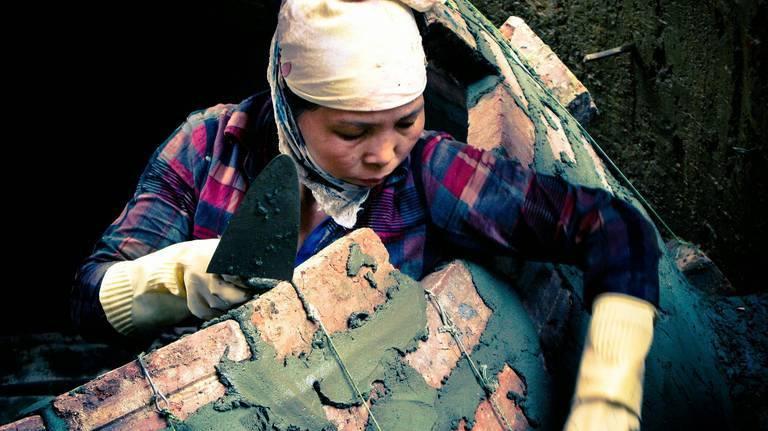

If you were to pick your favorite way to reduce carbon dioxide in the atmosphere, what would it be?
Would it be helping an endangered species survive in Madagascar's rainforest? Or perhaps funding the creation of new and safer cookstoves that support small business development? Or a biogas project in a rural community that helps convert solids to power and methane to low-carbon energy?
A few years ago, these might not have been the examples we would have readily thought of when we considered ways to reduce carbon emissions, and certainly not when it came to the idea of purchasing carbon offsets.
But that's just the point, says Cool Effect's CEO Marisa de Belloy, who said that a signature feature of the crowdfunding program is to make the process of combating climate change simple and actionable.
"When establishing Cool Effect, we were committed to making a serious topic feel approachable. People too often get scared away at the complexity and science of climate change," said de Belloy. She said the organization believed that people often felt out of touch and doubted their ability to really have an impact. "We sought out to change that with a more approachable tone on how we educate our community."
According to de Belloy, the response from the public has been tremendous. "We've been extremely successful in reaching the Americans who are worried about climate change."
She said the biogas conversion project in Vietnam, which achieved its initial funding goal at the beginning of August, is a good example of Cool Effect's reach when it comes to mitigating carbon emissions and helping a developing community realize a path to sustainability. The project has so far reduced more than a million tonnes of greenhouse gas emissions (specifically CH4 - methane) through the construction of over 150,000 biodigesters that break down human and animal waste into useable energy. The methane then can be used in homes as clean cooking and heating fuel.
The environmental and social benefits of the project are numerous. The project not only saves trees that would have normally been used as fuel for cooking, but also improves the residents' quality of life by reducing waste, freeing up time and improving health. And, it paves the way for more employment in the community as locals are trained to become builders and technicians.
Best of all, it diverts dangerous methane gas, which has 25 times the warming potential to Earth’s atmosphere, into something useful and harmless. The project was implemented in cooperation with the Vietnamese government, to ensure local success.
Improved cookstoves on three continents
Cool Effect's efforts to improve the cooking facilities of low-income households is another example of a far-reaching social project that helps to reduce carbon dioxide emissions.The effort to improve cookstoves in impoverished communities has been around for a few decades. Replacing old, makeshift cooking systems that use copious amounts of wood, coal or animal dung not only reduces exposure to toxic fumes, but has the potential to improve the community's economic well being. The challenge, observed researchers in 2014, was finding ways to make them available and affordable to low-income households and businesses, which often didn't have the money to invest in better cooking methods.
Cool Effect has vetted several improved cookstove projects in recent years that do just that. In Uganda, where cooking with coal is prohibitive for many households, the Affordable Cookstoves project helps local entrepreneurs and families purchase stoves that are safer and take less coal to run. The project is also beneficial to restaurant owners, who can now operate on a lower cost margin and homeowners who spend less on fuel. The demand then increases opportunities for shopkeepers, who can rely on more business.
This circular benefit is also a plus for the environment, since less coal and more efficient cooking methods mean less greenhouse gas emissions.
Of course, cookstoves, like communities, come in many sizes and shapes. In Peru and Honduras, the projects Cool Effect represents are revamping the way that businesses and homes cook, building more efficient stoves out of adobe, brick and other materials and replacing open wood fires that require large amounts of fuel.
Stopping deforestation in the Makira Rainforest
Cool Effect has also identified a world-class project that helps communities protect endangered forests, while educating the next generation about the importance of safeguarding local species like the indri and red ruffed lemurs.In Madagascar, Cool Effect's Makira Rainforest Conservation Project supports sustainable agriculture by guiding communities in professions that will both support their families and local endangered species. The Makira Natural Park, a sprawling protected rainforest of more than 920,000 acres is a magnet for bird watchers and nature lovers, supporting a vibrant tourism industry. But it's also suffered from illegal logging and deforestation for many years. The Makira Rainforest Conservation Project educates and supports communities in and around the forest in developing new sources for employment, like tourism, beekeeping and farming -- all industries that help feed and protect the forest.
In the process, said de Belloy, the project helps protect the forest's delicate ecology -- including the endangered lemurs.
Cool Effect: A simple premise to help cool the Earth
The simplicity of Cool Effect's strategy, said de Belloy, springboards from the idea that something small, done right, can have a profound effect. Helping communities transform their lives with one single change is a good example she said, because the carbon credits donors purchase help stop the instigators of climate change. Each of these small projects have yielded better quality of life, broader education opportunities, more environmental advocacy and in the process helped to cool the Earth.Yet it is important to remember, she said, that it's the concrete science behind Cool Effect's methodology, not the hope of making change.
"Hope is certainly a backbone of Cool Effect, but more importantly, it is hope backed by sound science and the truth behind climate change," de Belloy said. "Over 145 million Americans are worried about climate change and want to do something to help, according to Yale School of Forestry and Environmental Studies research. These Americans come from all age groups and all parts of the country and support different political parties, but they all want to come together to save the planet." And like those who support Cool Effect's endeavors, she added, they know that climate change must be met with practical, sustainable methods.
In many ways, Cool Effect's ingenuity underscores a truism about today's effort to combat climate change: To heal the environment, we must first help communities become sustainable. That may sound like a huge job, but as the recently completed biodigester project shows, small actions and achievable goals can have global impact.
Images courtesy of Cool Effect
Mining Giant Rio Tinto Sheds Coal for Good


Not even a decade ago, coal was an important part of Rio Tinto Group’s business portfolio. The Anglo-Australian mining coal giant once had a considerable number of such assets worldwide.
But according to Bloomberg, Rio Tinto is moving fast to sell off its last remaining coal operations. The company has put its Australian operations on the market, and once those assets are sold, the $33 billion mining juggernaut will no longer include coal within its entire global business operations. Rio Tinto has reportedly been shopping around its entire Australian coal division for several months.
Only recently, the company had stumbled into trouble as it had been accused of running afoul of Securities and Exchange Commission laws. As a coal mining project in Mozambique began to suffer one setback after another, Rio Tinto discovered that operation was just one example of how coal was no longer the profitable business it had been in the past.
And like many of its competitors, the company found itself stuck as more power companies seek alternatives to fossil fuels. Rio Tinto and many of its peers have scrambled to offload its coal mines as more countries, and the utilities powering them, have sought alternatives such as natural gas and renewables.
Rio Tinto’s exit from coal has been moving along at a steady pace. In 2015, the company disbanded its energy division. Earlier this year, Rio Tinto offloaded its coal operations in China for almost $2.5 billion.
While coal has increasingly been described as a risk to investors due to the chance many mines will soon become stranded assets, that is not the narrative Rio Tinto has been communicating to stakeholders. The company claims it is simply concentrating on business segments that are far more profitable. Rio Tinto’s CEO, Jean-Sebastien Jacques, also told Bloomberg that it has been selling its coal portfolio for a good price, allowing the company to return more cash to shareholders. This month, Rio Tinto bought back 11.8 million shares for an approximate $750 million.
Not every player in the mining and extractives sector is following Rio Tinto’s strategy of walking away from coal. BHP Billiton, for example, still considers coal as critical to its strategy. Nevertheless, the natural gas boom and renewables’ improved scalability has convinced more investors that coal is not part of their future. Even if solar does not surpass coal as a leading source of power by 2020, as more optimistic analysts have insisted, the handwriting is on the wall. More financial institutions are urging that investors be warned about climate change risks; sovereign funds in countries such as Norway are also leading the charge to move past coal.
Image credit: Beyond Coal & Gas/Flickr
Expanded PET Plastic Recycling Could Help Boost the Circular Economy


The use of polyethylene terephthalate, or PET, has increased rapidly over the past two decades. Most customers are familiar with PET for its strength, making it a reliable material for beverage bottles, deli containers and tubs for salad greens. But in recent years it has also become a popular material for athletic apparel and upholstery.
According to the environmental NGO GreenBlue, the volume of PET manufactured worldwide for fibers and yarns used in textiles and upholstery is actually greater than what is used in containers. That's a huge missed opportunity, given that the textiles can actually have a second life.
The ever-mounting problem, says GreenBlue, is that far too many PET materials are ending up in landfills or incinerated at the end of their products’ usefulness. This trend is ongoing despite the fact that compared to other plastic resins on the market, PET is relatively easy to recycle, and there are countless opportunities for manufacturers to procure such materials.
Improvements in chemical recycling, moreover, could help increase waste diversion efforts across the plastics industry. Currently, most textile scraps end up being processed into low-value materials such as building insulation and carpet padding.
To that end, GreenBlue’s researchers recently explored how manufacturers could scale up an even more effective infrastructure for gathering and recycling PET textiles and upholstery. The NGO’s report analyzes the challenges and opportunities of recycling both pre- and post-consumer PET textiles so that they could be used more in four key industries: apparel, textiles, carpets and office furniture.
GreenBlue arrived at its conclusions by collecting data from manufacturers in gauging the potential for pre-consumer PET textile waste available for those four industries. The NGO’s researchers also gathered information about revenues that could be earned from selling textile waste to recyclers. Finally, GreenBlue discussed the benefits and constraints of open- and closed-loop systems, as well as the advantages chemical recycling could offer in developing a more efficient recycling system for processing all the various types of PET materials.
What is especially compelling about scaling up PET recycling is that GreenBlue views such systems similar to the watersheds found in ecosystems. In watersheds, water flows to a regional basin. In that vein, PET recycling markets have a similar structure, as recyclers can aggregate multiple streams of PET materials available within a given region.
Such a regionalized approach, argues GreenBlue, could actually boost the amount of PET materials available, decrease transportation costs and could improve the cost-effectiveness of recycling PET. GreenBlue also mapped locations of selected textile waste generators, such as residential textile mills, carpet mills and carpet recyclers along the eastern U.S. An interactive map GreenBlue posted allows the user to view potential sources of PET by industry sector and geographical location, in turn displaying the potential to collect PET materials sourced from various sectors across that region.
GreenBlue’s study did not estimate the potential PET textile feedstocks. But what the survey did find was that the companies they queried have been generating at least 20 million pounds of pre-consumer PET textile scrap generated a year – and in general, different types of feedstocks tend to be concentrated in specific geographic areas. The potential for a closed-loop textile economy is huge – if a more efficient recycling infrastructure can emerge.
Georgia, for example, is the epicenter of U.S. carpet manufacturing. If more companies in this sector could follow the lead of Atlanta-based Interface, the carpet square (and corporate sustainability) giant and like-minded companies in this supply chain, more of that otherwise discarded PET could be recycled and reused – and achieve what BlueGreen says should be the ultimate goal, high-value yarns and fibers that could be woven into textiles, eventually to be recycled again and again.
Image credit: Interface/Facebook
Sky Group Chief Executive Jeremy Darroch announced as the new Business in the Community Chair
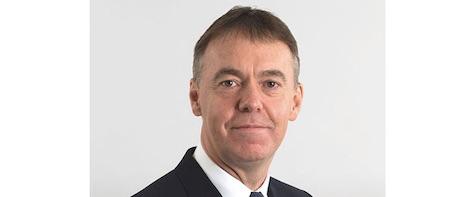

Business in the Community, The Prince’s Responsible Business Network, has announced that it will appoint Jeremy Darroch, Group Chief Executive of Sky as its new Chair on January 1 2018. The decision was agreed by the Business in the Community board in consultation with its President HRH the Prince of Wales.
Darroch joins a 20-strong group of senior business leaders from across industry sectors who together shape the charity's mission and strategy. He takes over from the current Chair Antony Jenkins, Founder and Chair 10x.
Darroch has been in his current role at Sky since 2007, driving consistent business performance and growth, alongside continued dedication and investment in its Bigger Picture social purpose and community initiatives. He was a driving force behind the cycling initiatives that helped get over 1.5m people riding bikes more regularly, and the Sky Academy and Sky Sports Living for Sports programmes, in which more than half a million young people have participated. In 2009, he oversaw the launch of Sky’s Rainforest Rescue, in partnership with WWF, which helped raise £9m to protect 1bn trees in the Amazon.
More recently, he announced Sky’s Ocean Rescue campaign, in which Sky aims to use its position as Europe’s leading entertainment business to raise awareness of how plastics and other pollution affect ocean health. As part of Sky Ocean Rescue, Sky has committed to eliminate all single-use plastics from its operations, products and supply chain by 2020.
Antony Jenkins, outgoing Chair Business in the Community said: “I could not be more delighted that Jeremy Darroch is joining Business in the Community as its new Chair. As someone who has already demonstrated his commitment and understanding of the responsible business agenda he is exactly the leader we need in this new digital era to drive and shape our agenda and grow the number of businesses committed to building a more sustainable and successful country.”
Amanda Mackenzie, Chief Executive of Business in the Community said: “We could not be more pleased that Jeremy Darroch will be our new Chair. He will help our mission to build healthy communities with successful businesses at their heart. “As CEO of Sky, Jeremy has shown his commitment to placing trust and values at the heart of his organisation through numerous programmes and initiatives such as The Sky Academy and Bigger Picture.”
Darroch said: “With many challenges facing the world and society today, the work of Business in the Community – to build a fairer society and a more sustainable future – has never been more important. These values are aligned with the values we aim to live up to every day at Sky. I’m excited to share my own experiences and to learn from others within the BITC network, so that together we can ensure businesses make a valuable contribution to the societies in which we work and live.”
For more information or to arrange interviews, please contact:
Andrew Swailes, [email protected]
Alex Delaney, [email protected]
Tipping Point Brings Corporate R&D to Social Ills
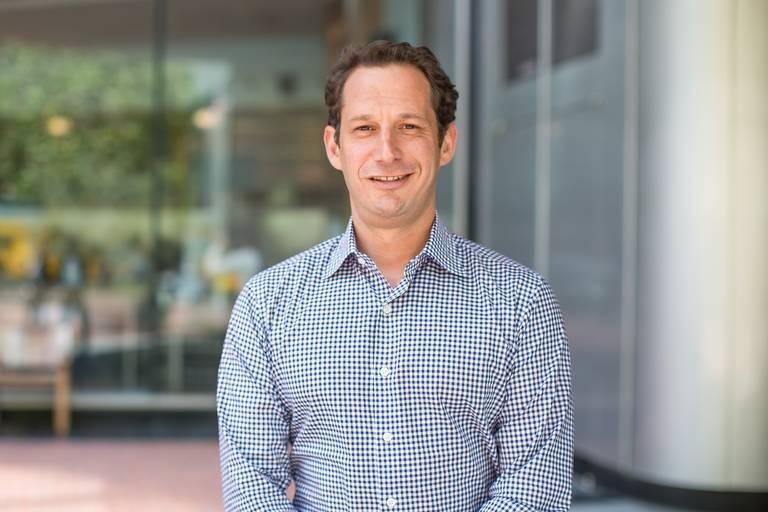

For San Francisco's lowest-income families, poverty comes with many challenges. Finding affordable housing and the income to cover the essentials in the country's fourth most expensive city, or the Bay Area for that matter, isn't the only problem that a family of four faces on a monthly basis. Finding affordable, and oftentimes, available schooling is just as difficult for the Bay Area's growing families.
According to Child Care Aware of America, child care costs in California amount to about 14 percent of the median income for a family of four. In the Bay Area, where even residents with six-figure salaries struggle to make end's meet $100,000, paying for preschool is a non-starter.
In recent years, two organizations armed with unique talents have taken on the task of solving the Bay Area's preschool availability problem. Tipping Point Community, a foundation that fights poverty and homelessness in the Bay Area, uses a simple formula: invest - measure - improve - repeat, to pinpoint the most effective social programs to effect change. Aspire Public Schools operates affordable schooling in California and Tennessee's low-income cities.
The community in need in this case, was Oakland, California a city of 420,000 and a major lack of preschool accessibility for the city's families. In 2014, more than 67 percent of Alameda County families with preschool-eligible children found it challenging to enroll in affordable facilities. Aspire, which already operated several schools in the city, knew that funding was only part of the answer. Squeezing new amenities onto school grounds was the other. The two organizations went to work to explore the problem, using Tipping Point's new research development model, the T Lab.
"In T Lab’s first year, we spent several months interviewing families across the Bay Area," explained T Lab's Director, Stephanie Lewis. "From this research, our team realized we could potentially increase preschool access by converting buses into preschool classrooms."
That's right. The very buses that have helped to facilitate access for children of all ages by shuttling them to and from schools were in fact, an ideal environment for learning. The close-knit setting is familiar to students. Buses could easily be redesigned to increase engagement and become a safe and supportive setting to learn. Just as important, busses offered a fast lower-cost way of powering up more preschool classes.
But for both organizations, coming up with a plausible answer was only part of the solution. The community, teachers and students also needed to get on board. T Lab's R+D methodology helped them verify that.
"In order to test this hypothesis, the team prototyped it at extremely low fidelity," said Lewis. To get an idea of what would best work, the research team built a rough model of a classroom on a bus out of cardboard and showed it to parents, teachers and children.
"We then rented a real bus and collaborated with Tipping Point grantee Aspire Public Schools to simulate the preschool experience for four days. That next fall, 14 children attended a semester on the bus at an Aspire campus in Oakland."
For Tipping Point the success was also a validation of its own hypothesis: Solving homelessness and poverty in the Bay Area would require not just funding and innovation, but state-of-the-art R+D methodology -- something that would allow stakeholders to truly brainstorm and test out unconventional answers for seemingly insurmountable problems.
Lewis said the value of this kind of strategy was evident in Aspire's success in developing new a new preschool classroom. "Aspire had long dreamed of offering preschool to their families, but never considered it in this form. Testing preschool services on the bus led to our grantee rethinking how they could best use the space at their existing schools, as well as what curricula and classroom design considerations were critical. If we hadn't done this research and prototyping, they may have gone straight to writing a business plan—without having the opportunity to test their hypotheses first," she said.
T Lab is Tipping Point's R&D lab, where the non-profit tests and prototypes "new poverty-fighting ideas" in partnership with grantees. The idea is to test proposed solutions on a small scale so that grantees can rapidly capitalize and expand on "what works." Since launching the innovative "preschool on a bus" model, the T Lab has been used to develop other smart programs, like its Year Up R+D program, which helps facilitate workforce development training and internship for high school students.
Lewis pointed out that there are concrete similarities between the way R+D projects are explored and tested in the for-profit sector and Tipping Point's T Lab, which focuses on finding the answers for social challenges a community may face.
It's a unique way to handle many of the Bay Area's most acute problems, said Tipping Point Founder and CEO Daniel Lurie. It's also a lesson that the nonprofit sector can take from for-profit success: Developing a credible research model and taking the time to develop prototypes and track experimental results can lead to unexpected answers.
"Last year, 1,000 of the world’s largest companies spent $680 billion on research and development. In the nonprofit world, we spent virtually nothing," said Lurie. "If companies like Apple, Google, and Levi’s all have innovation labs, why shouldn’t we? Despite living in the hotbed of “big ideas” Bay Area nonprofits are excluded from the opportunity to think big.
"We expect nonprofits to tackle and solve massive social problems, but we do not offer them the capital, autonomy and talent to make that happen."
Lurie said that Tipping Point learned early on that there were a number of things that it could do to help grantees reach their goals. The first was providing unrestricted funding, something that very few funders actually do these days.
"It means that our grantees can spend that investment in whatever way will best support their work – that could be leadership training, new technology or marketing and branding support. We also are steadfast partners to our grantees." For Tipping Point, it also helped engender trust.
"There’s no better investment than unrestricted funding. A company would never think about doing business without a line item for operating costs, and yet that’s how most nonprofits have to think about their business," said Lurie.
And there are other lessons that Tipping Point and its nonprofit partners learned. "It’s not enough to just count the number of meals served, beds slept in, or classrooms filled. We must understand how individuals are performing in the program [and beyond] on to show true success. For that reason, said Lurie, "[we] measure our grantees impact through core metrics. Core metrics put a premium on post-program data collection, and are designed to track outcomes one year after a client has left services.
Tipping Point leverages "the best of the business world to enhance skills and efforts. When we started Tipping Point, we wanted this to be about our entire community -- our grantees, the clients the serve, the donors who support us and those organizations and the business world coming to the table," explained Lurie.
"I’ve been overwhelmed by the level of support we’ve seen through companies who don’t just want volunteer opportunities for their employees, but truly want to serve as counselors and partners to our grantees. As a nonprofit organization, it’s important to leverage that, and as a business, it’s important to understand what an outsized impact you can make by leveraging skills and scale."
Images courtesy of Tipping Point Community.
Zara Promises to Set Up Fund for Unpaid Turkish Workers
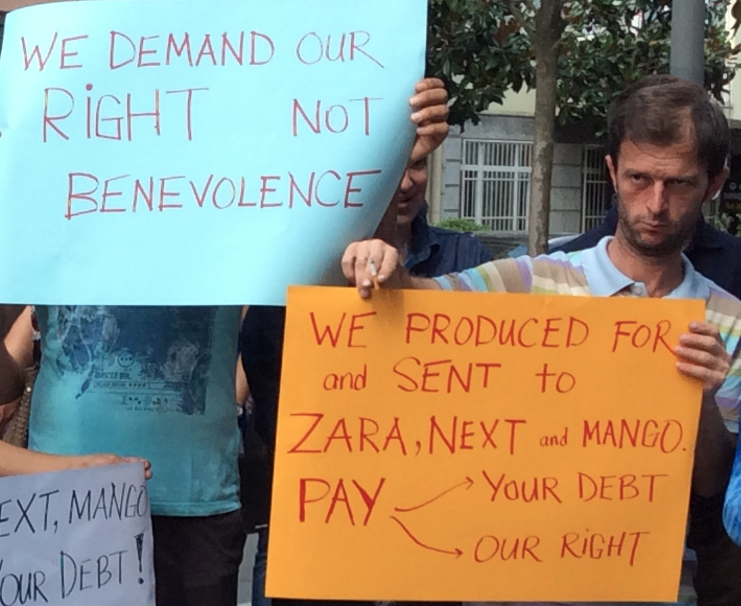

The popular fast fashion retailer Zara and its parent company, Inditex, have reportedly announced that it will launch a fund for workers in Turkey. The news comes as the popular fashion brand has been criticized over how it handled the plight of these workers, who have said they are owed three months of unpaid wages from last year after their company recently closed down a factory in Istanbul without warning.
According to the global supply chain trade group Chartered Institute of Procurement and Supply Chain (CIPS), Zara will launch a "hardship fund" that aims to reimburse the estimated 140 workers for unpaid wages, severance pay and unused vacation time.
The company was targeted for criticism by human rights activists, customers and social media users on platforms such as Twitter when some Zara shoppers noticed tags were sewn into their garments. Among the notices were pleas such as "I made this item you are going to buy, but I didn’t get paid for it."
In addition to Zara, the retailers Mango and Next reportedly had contracts with the factory's owner, Bravo. When the companies at first refused to take ownership of the workers' lost wages, the labor and human rights coalition Clean Clothes Campaign slammed Zara and the other companies with which Bravo had a contract. The total for the 140 workers left with three months of lost wages amounted to about €650,000, which Clean Clothes Campaign and news outlets such as Fortune pointed out was only 0.01 percent of the company's annual sales.
After Zara, Mango and Next reportedly offered a settlement that would have covered only approximately one-fourth of the workers' total compensation, an online petition urged customers to insist that Zara support a total reimbursement for all of the former factory's workers. As of press time that petition is close to reaching 300,000 signatures.
As for any apparel companies' suggestion that they should be held accountable for any shenanigans going on within its supply chain, one local campaigner had a strongly worded message:
“Brands are principal employers. They have proven time and again that they control every aspect of their orders to their suppliers," says Bego Demir of Clean Clothes Campaign Turkey. "Therefore, it is clear that it is in their power to make sure that all workers who produce their apparel receive their monthly wages and are working in safe conditions, and morally they must do so."
Image credit: Clean Clothes Campaign